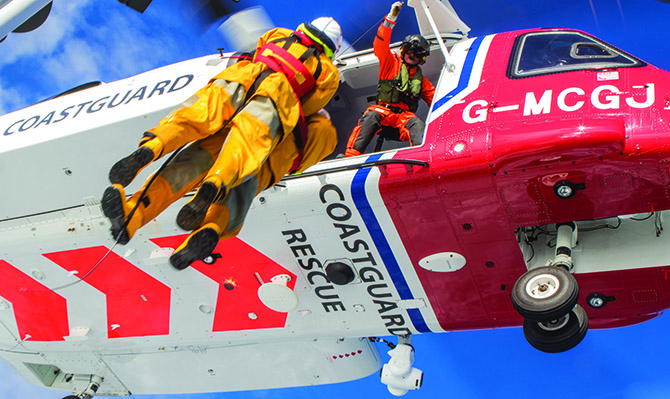
Her Majesty’s Coastguard is the United Kingdom’s 24/7 civilian maritime and aeronautical search-and-rescue (SAR) agency. The operational arm of the Maritime and Coastguard Agency (MCA), HM Coastguard operates under the auspices of the UK’s Department of Transport. While it is a uniformed service like the U.S. Coast, it is neither an armed service nor a law enforcement agency. Its motto is “Safer Lives, Safer Ships, Cleaner Seas.”
The MCA is led by Sir Alan Massey, chief executive. Prior to being appointed to his post in July 2010 by former Prime Minister David Cameron, Massey spent a career in the Royal Navy, which culminated with service as Second Sea Lord and Commander-in-Chief, Naval Home Command. The position of Chief of the Coastguard currently is vacant. His Royal Highness The Prince of Wales serves as patron of HM Coastguard.
According to its official website, the missions of HM Coastguard include:
• Ensuring the safety of everyone in a vessel in UK waters and all seafarers on UK-flagged vessels
• Ensuring all equipment on UK vessels is fit for its purpose
• Ensuring all seafarers on UK vessels have correct documentation
• Ensuring the environmental safety of the UK coast and waters
• Ensuring the accuracy of hydrographic data on UK charts
• Overseeing coastal rescue volunteers, hydrographics, seafarer certification, and the port state control inspection regime
Headquartered in Southampton, HM Coastguard maintains nine operations centers and has an end strength of 1,050 staff and 3,500 volunteers who make up the Coastguard Rescue Teams of the Coastguard Rescue Service. According to a 2017 strategic overview of SAR in the United Kingdom, “These teams are strategically located around the coast of the UK and are equipped to deal with incidents that are likely to occur in their area, given the coastal terrain, shoreline activities and conditions.”
Platforms in the inventory of HM Coastguard include 11 Sikorsky S-92 and 11 AgustaWestland AW189 helicopters, which are operated by the Bristow Group, a private contractor that provides SAR support worldwide. Pollution control missions are flown by fixed-wing platforms, to include the Reims-Cessna F406 Caravan II, Cessna 404 Titan II, and the Lockheed L-188 Electra. These aircraft are augmented by a fleet of rigid-hulled inflatable boats (RHIBs).
For the period 1 April 2016 to 31 March 2017, HM Coastguard conducted 2,594 SAR helicopter taskings, including:
• 1,542 rescues/recoveries (transfer of individuals to a safe environment)
• 560 searches for craft and persons
• 309 prearranged transfers of patients and organs between medical facilities across the UK
• 183 support taskings, e.g., on-scene assistance and prepositioning of SAR assets
Like the U.S. Coast Guard, HM Coastguard has gone through a series of name changes and cabinet departments over the past two centuries. The service traces its roots to 1809, to the formation by the Board of Customs of the Preventative Water Guard to combat tea smugglers. On 15 January 1822, after years of taking on additional maritime security missions, the Preventable Water Guard was renamed the Coast Guard by the Board of Customs (the name later would merged to become Coastguard).
The Coast Guard Act of 1856 transferred HM Coast Guard to the Admiralty, where it saw service as a naval reserve force. In 1923, the Coastguard was transferred to the UK Board of Trade so it could focus on marine safety and search and rescue. In April 1994, the Coastguard Agency was formed. Finally, in 1998, the Marine Safety Agency merged with the Coastguard Agency to form the Maritime and Coastguard Agency.
Mr. Dolbow is editor of The Coast Guardsman’s Manual, 11th edition, published by the Naval Institute Press, and a senior acquisitions editor for professional development books at the U.S. Naval Institute.


